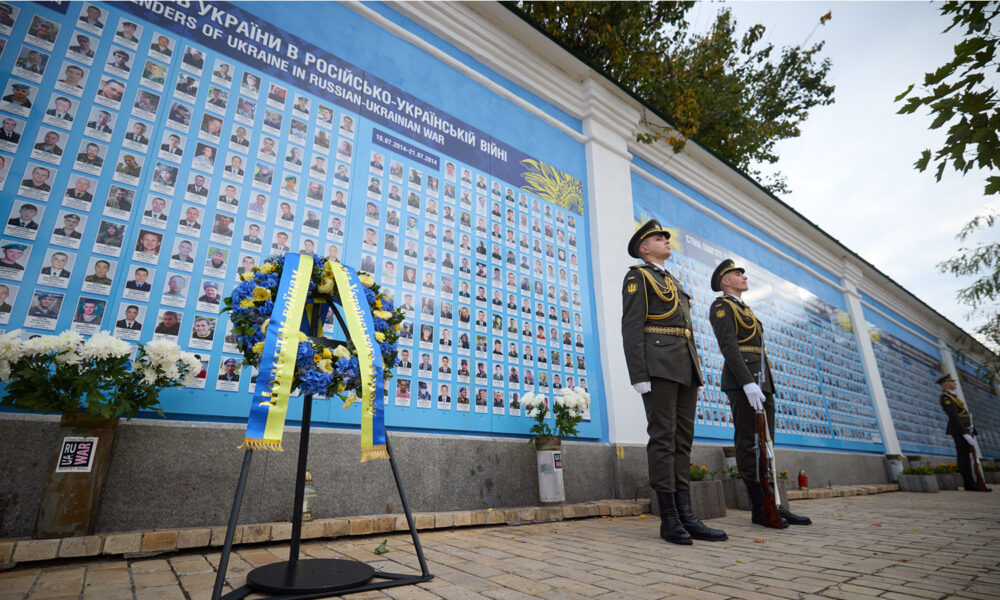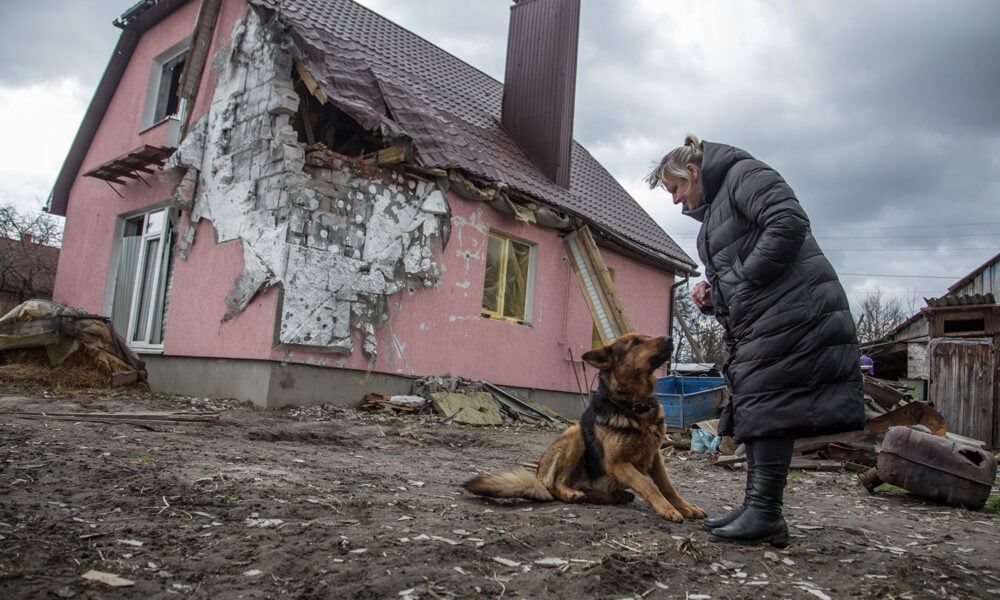It’s been one year since Russia’s second invasion of Ukraine, the first being in 2014 when they quickly seized control of Crimea. Those initial days and weeks after the 2022 invasion were filled with worry and anxiety about the increased risk of nuclear war. For many people, it was the first time they had ever thought about nuclear weapons as presenting a real threat. Others, including me, were reminded of the pervasive dread that loomed in the background during the Cold War. The unacceptable risk of living with the means to destroy ourselves was once again top of mind.
We have had good reason to be concerned throughout this year, but we managed another orbit around the sun without the use of these civilization-ending weapons. We have been fortunate in that regard. But war is an ugly, terrible thing, and the people of Ukraine have suffered immensely over this past year.
Damage to arms control
We knew from the start that the war in Ukraine would have serious implications for international security. The most immediate fears of Russia and NATO stumbling into war with one another or even the prospect of nuclear conflict have thankfully not come to pass. But there have been other serious blows to the international order as a direct result of the war.
For example, the last remaining arms control treaty between the US and Russia, the New Strategic Arms Reduction Treaty (New START), is under threat. In January, the State Department concluded that because Russia was refusing to permit the United States to conduct Treaty-mandated inspections and would not meet in the Bilateral Consultative Commission, it is not complying with Treaty provisions. The reasons Russia has given for not resuming meetings and inspections are connected to the war in Ukraine. Russia claims that US sanctions are hindering their ability to conduct their own inspections in the United States, but this issue should be surmountable and ultimately just amounts to a poor excuse. Russia also wants to discuss western aid to Ukraine as part of the Bilateral Consultative Commission while the US wants to confine the discussion strictly to New START implementation. The two states appear to be at an impasse.
New START is a crucial treaty for managing nuclear risk and it expires in three years. If it expires, with no follow-on agreement, there will be no legal limits on the number of nuclear weapons the United States and Russia can build and deploy. Just this month the Federation of American Scientists found that without the constraints of New START, the US and Russia could double their deployed number of warheads in very short order. It is possible that New START will be one of the many casualties of this war, and the demise of arms control could set the stage for a world with more nuclear weapons and increased nuclear risk.
Using a crisis to start a new arms race
Another consequence of the war in Ukraine is much broader than the loss of a single arms control treaty. The war in Ukraine is being used by some policymakers in the US as an excuse to push for more, new, and better nuclear weapons. Even before invading Ukraine, Russia was building new types of nuclear weapons. Now China has recently built hundreds of missile silos, a troubling development. In the present circumstances, we can expect that lawmakers will be prone to increase military and weapons spending, even though US military spending is already more than the next nine countries combined. Moves in this direction may have a detrimental effect on the increasingly competitive relationship with China. The US and China are in a cycle of distrust and military build-up right now. US reactions to the war in Ukraine will have consequences for our relationship with China.
The war in Ukraine has also increased Allied cohesion, which is both good and bad news. We’ve seen NATO acting with more unity than they have in the recent past. Our Allied relationships are an important part of keeping the peace, and a bolstered Alliance can be a source of strength and stability in uncertain times. At the same time, the Alliance is more committed to nuclear weapons than it has been in decades, which is not a positive consequence.

Lessons learned
There are some lessons we can take from the past year. One of the most important is that Russia’s nuclear weapons are enabling it to carry out a conventional war in Ukraine. US and European allies have been very cautious about how much support they provide to Ukraine precisely because they don’t want to risk escalating into a direct conflict between NATO and Russia. We often hear that nuclear weapons prevent conflict, but in this case they are facilitating a very brutal war of aggression.
Another lesson that we must not lose sight of is that the risk of nuclear escalation is still very real. We can all be grateful that a full year has gone by without any nuclear use. But the situation remains very fraught. In addition to the heightened risk of intentional nuclear use, the risk of nuclear war due to accident, miscalculation, or misunderstanding is also greater as the war in Ukraine draws nuclear-armed states closer to direct conflict. And, in this particular conflict, we have seen additional nuclear-related dangers as the Russians deliberately targeted and shelled Ukraine’s nuclear power plants risking ecological disaster. As long as the war rages, the danger is elevated.
What’s at stake
It’s important that policymakers prioritize arms control with Russia—even in the midst of Russia’s active war with Ukraine. Arms control is not an activity we carry out only with our friends. Regardless of other factors, we must talk to Russia about continuing to constrain nuclear arsenals and hopefully one day reducing them even further. Russia doesn’t seem ready to engage in this conversation at the moment, but the US needs to continue to pursue it with vigor.
We also can’t let some in the US defense establishment use the war in Ukraine as an excuse to increase our nuclear arsenals in both number and destructiveness. Both the war in Ukraine and concerns about China’s nuclear program are motivators for this activity. There’s a contingent of folks in the nuclear security space that want to run out the clock on New START and lift the legal limits on deployed nuclear warheads because China is not constrained by our bilateral treaty with Russia. And that approach would be really dangerous for international security and could lead to a very costly new arms race, even as the US Defense Department lacks accountability for its astronomically large budgets and repeatedly fails audits.
The possibility that New START will expire without anything to take its place in 2026 and a foreign and defense policy towards China that feeds into an escalating competitive dynamic are just two specific issues that lie against the bigger backdrop of an unjust and inequitable system that is unable and ill-equipped to bring true security to everyone.
We need to continue our work towards a transformed security framework. That begins with specific solutions like a renewed commitment to arms control, but ultimately will require fundamental changes to the way nuclear weapons decisions are made. For the most part, nuclear weapons policy is directed by a very small, elite group of officials dedicated to maintaining the status quo. If we ever hope to achieve a world without nuclear weapons, we have to resist the regression that is taking place right now and continue moving forward along the path to true security for us all.

